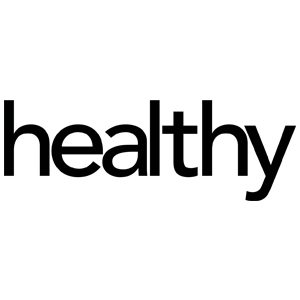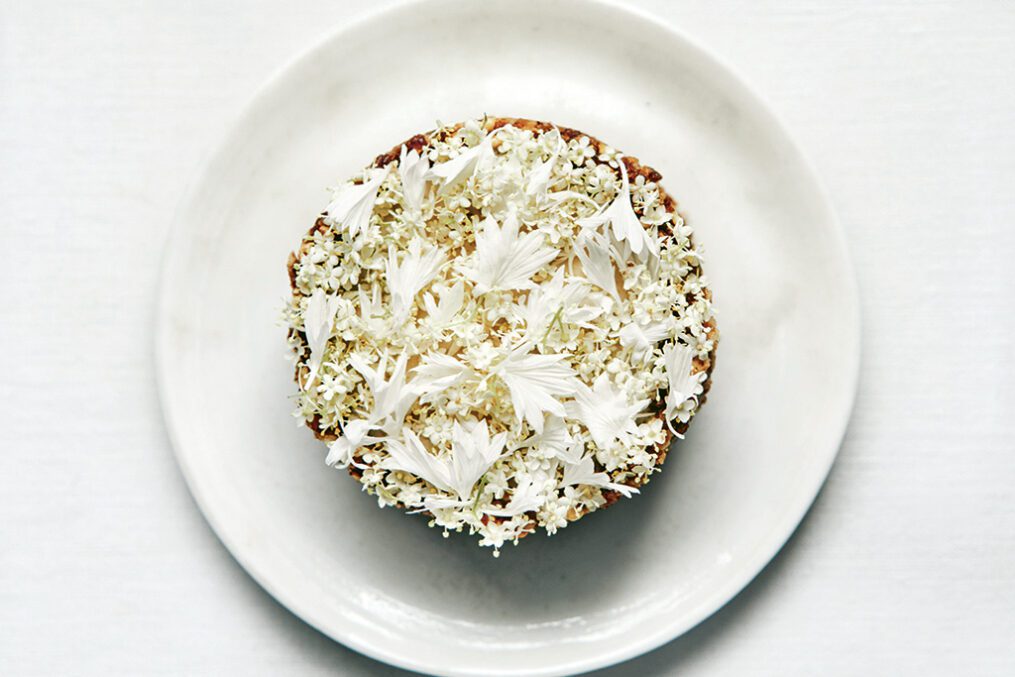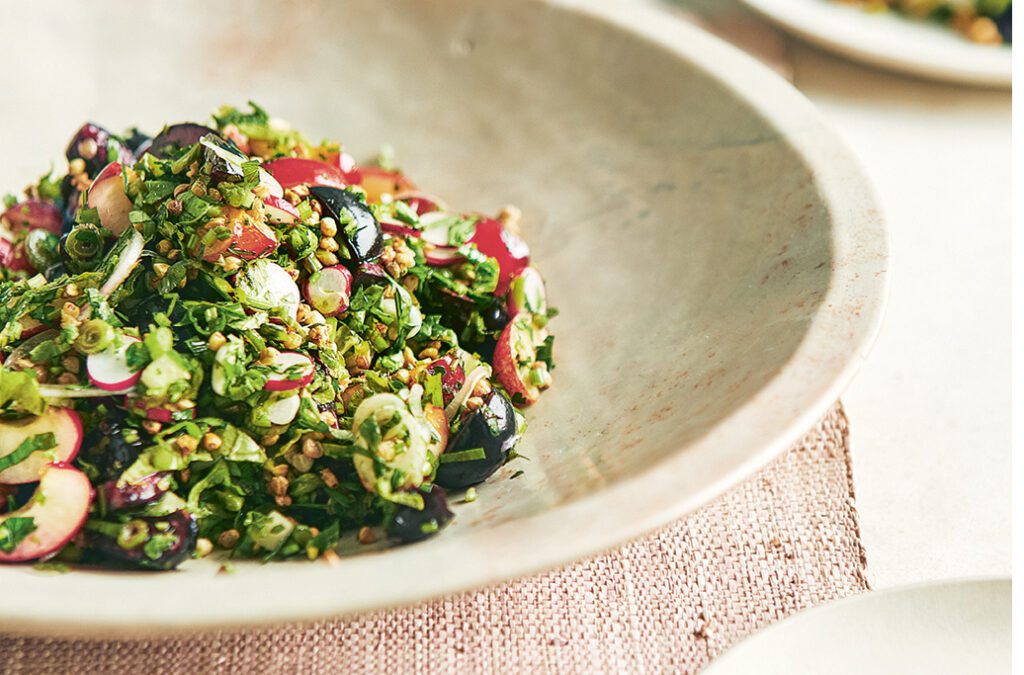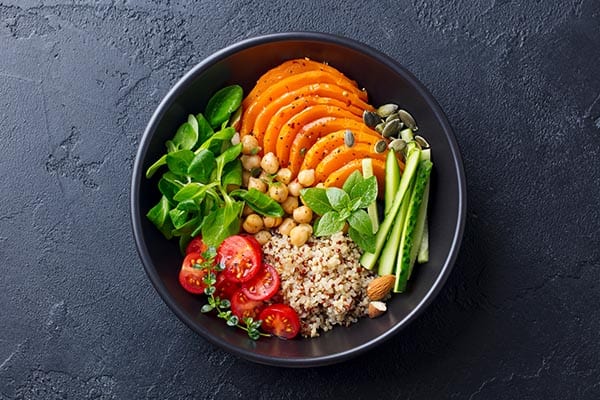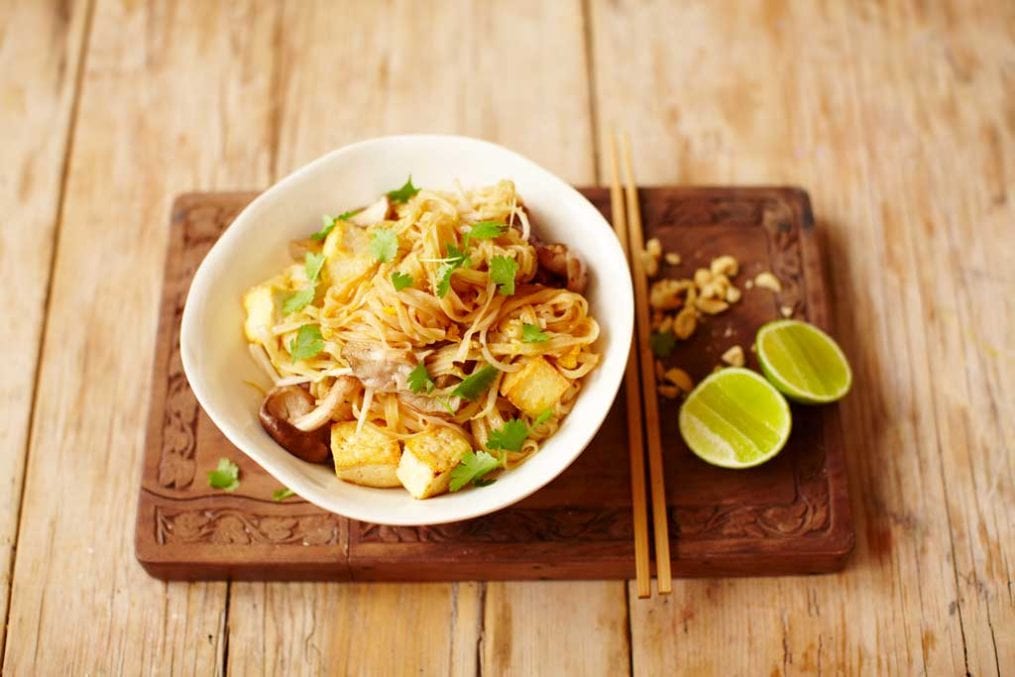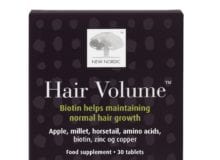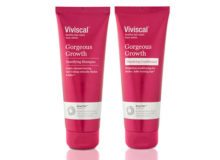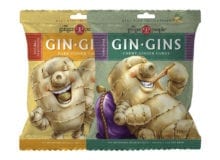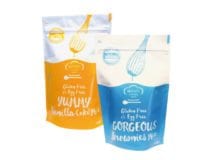What to eat to beat hay fever
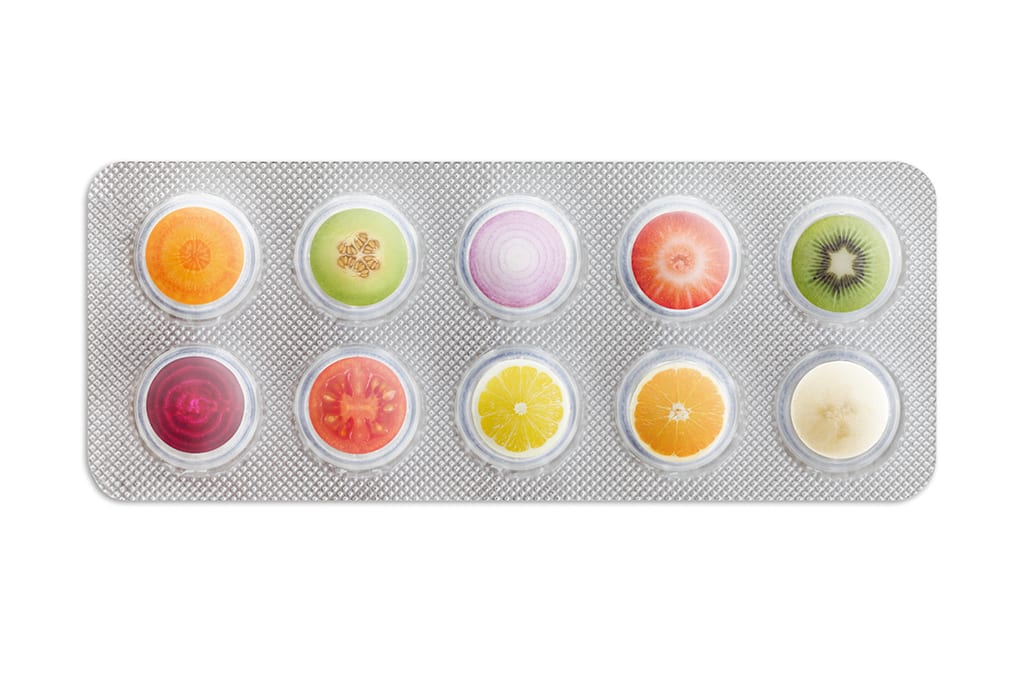 Yep, it’s hay fever season, and we’re here to help you go through it smoothly like a champ. Together with nutritional therapist Hannah Braye of Bio-Kult, and airborne allergies expert and creator of the HayMax organic allergen barrier balm Max Wiseberg, we rounded up the foods to help you keep pesky symptoms at bay, and the ones you should avoid at all costs.
Yep, it’s hay fever season, and we’re here to help you go through it smoothly like a champ. Together with nutritional therapist Hannah Braye of Bio-Kult, and airborne allergies expert and creator of the HayMax organic allergen barrier balm Max Wiseberg, we rounded up the foods to help you keep pesky symptoms at bay, and the ones you should avoid at all costs.
‘As hay fever is essentially an inflammatory condition, reducing intake of pro-inflammatory foods such as sugar, refined carbs, vegetable and sunflower oils and trans-fats found in processed foods, whilst following an anti-inflammatory diet, high in anti-oxidants and phytonutrients from colourful fruit and vegetables, is recommended,’ explains Braye. Here’s the lowdown:
What to look for
Antioxidants
Such a big word, but what do antioxidants actually do? It depends on which particular type we mean: ‘Quercetin and the polyphenols have been shown in studies to help reduce sneezing in those allergic to pollen and dust,’ says Braye. Enrich your diet with apples (especially the red ones), onions, garlic
, watercress, berries
, and grapes. Pineapple is also a good addition as it’s high in bromelain, which helps the body absorb quercetin more effectively.
‘Quercetin appears to work synergistically with vitamin C, which is also a powerful anti-oxidant,’ notes Braye. It gives protection against allergies and asthma, and prepares your body to fight off hay fever symptoms. You can find it in broccoli, peppers, dark leafy
greens, kiwis, and citrus fruits. Ensure your diet includes foods with beta carotene which is high in vitamin C and vitamin A, good for strengthening the skin and boosting the immune system – look for grapefruits, watermelons, and yellow peppers.
Wiseberg also recommends vitamin E and magnesium, which protect the body from harmful free radicals, which cause wheezing and nasal allergy symptoms. ‘Nuts are a great source of both,’ he says.
Read more: Know your nuts
Anti-inflammatory foods
To reduce inflammation in the body add red grapes to your diet, as their skins contain resveratrol, which protects us from both nasal allergy symptoms and wheezing. Braye emphasises the importance of omega 3 essential fatty acids – aim to eat three portions a week, from sources such as flaxseeds, chia seeds and hemp seeds.
Read more: Fill-you-up-salads: anti-inflammatory lunchtime salad
When it comes to spices, those with the most powerful anti-inflammatory properties are ginger and turmeric. ‘Studies have shown that they inhibit and stabilise mast cells, which are the cells responsible for producing the pro-inflammatory compound histamine, which causes the symptoms of hay fever and other allergies. Use in cooking as much as possible, drink warming golden milk or chop either root into hot water with a slice of lemon as a tea,’ says Braye. ‘In addition, the polyphenols in green tea have potent anti-oxidant effects, helping to reduce inflammation and stabilise mast cells, and they may have a positive impact on our gut bacteria, which could be of further benefit to hay fever sufferers.’ Speaking of gut health…
Gut bacteria focus
‘Hay fever is caused by an overreaction of the immune system. Around 70 per cent of our immune cells reside in the lining of the digestive tract and are supported and influenced by a diverse range of gut bacteria,’ explains Braye. You can tackle this with fermented products containing live bacteria, such as sauerkraut, kimchi, kefir, live yoghurt, miso and kombucha. Try Captain Kombucha Original Bio-Organic Drink for a refreshing drink, or Yutaka Korean Kimchi as an addition to rice and soups. Also nettle, chamomile and peppermint teas have been shown to help reduce histamine, which is inflammatory to the gut.
Read more: 5 fermented, gut healing foods
Decongestants
To help you clear your nasal passages season your dishes with lots of garlic and horseradish – they both have natural decongestant effects. “Use with caution though, as they may also irritate the throat, resulting in excess mucous and cough,” warns Max Wiseberg.
Read more: What it does… garlic
What to avoid
Margarine
This plant-based butter substitute might seem like an angel sent to the vegans, but not many know what exactly goes inside these alternative spreads. Wiseberg explains that what might seem to be “healthy” vegetable oils is, in fact, usually a blend of not-so-nutritious fats that can boost inflammation, resulting in increased risk of nasal allergy symptoms and wheezing. A better alternative for hay fever-affected margarine lovers would be coconut butter, such as Coconut Merchant Organic Coconut Butter.
Refined and processed foods
You’ve probably heard this a lot, but really try to limit your intake of processed foods. This doesn’t only mean pre-package snacks and fast foods, but also bread, white rice, white pasta, white sugar, or dairy. ‘These are the foods that stimulate mucus, which can build up in the throat and make your hay fever symptoms worse,’ says Wiseberg. He recommends swapping these for healthier wholemeal versions. And make sure you don’t have a wheat allergy – it makes hay fever symptoms worse. Look for signs of itchiness around your throat or scalp, skin irritation and asthma.
‘Sweetener alternatives include dried sugar cane juice, agave syrup; maple syrup, brown rice syrup in small amounts and honey,’ says Wiseberg. We recommend The Groovy Food Company Premium Agave Nectar Light & Mild and Meridian Natural Date Syrup.

